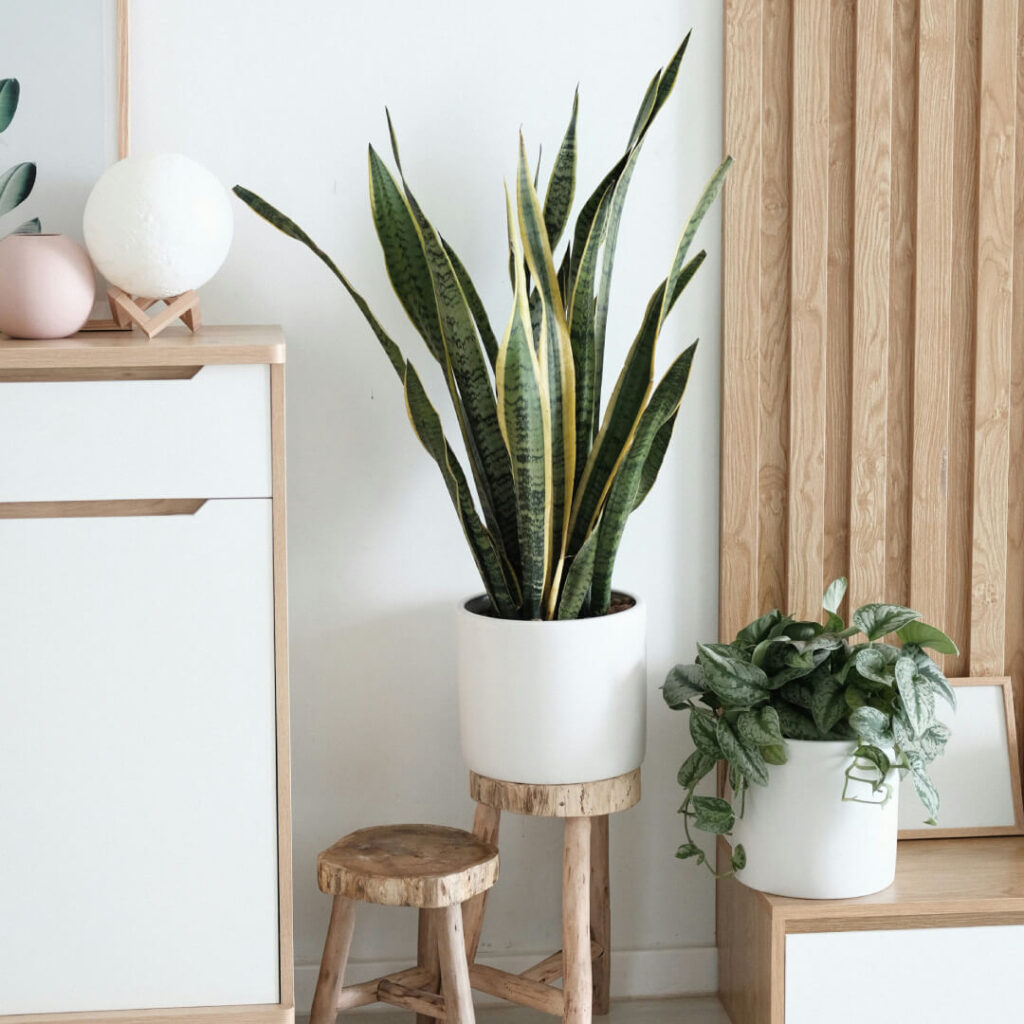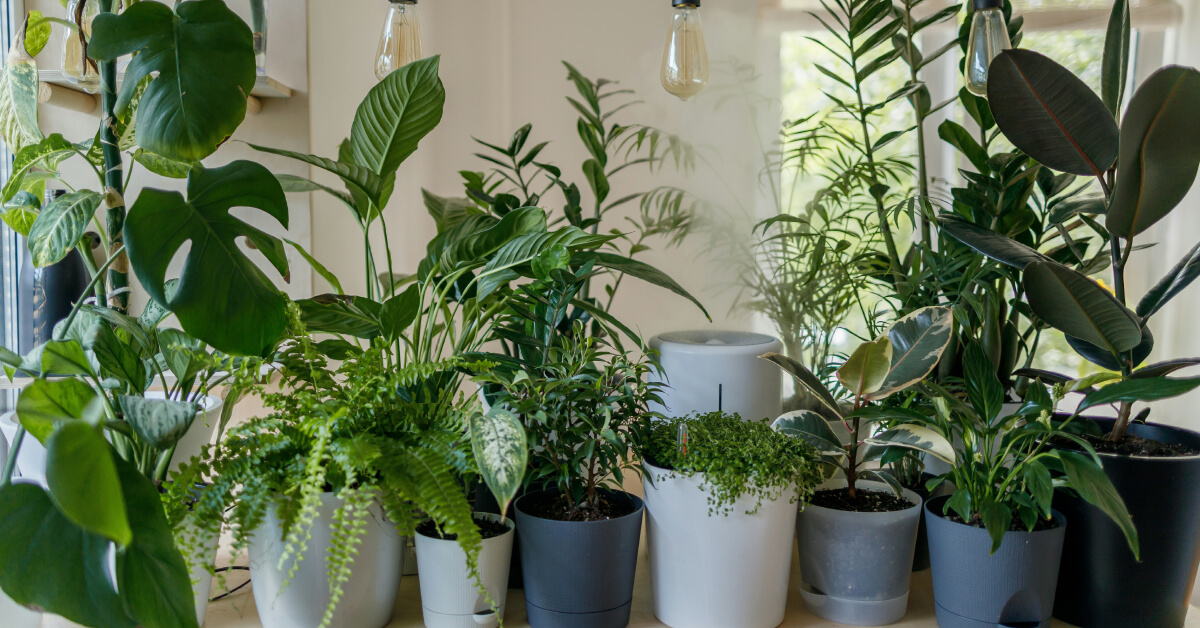Bringing greenery indoors enhances décor, improves air quality, and creates a calming atmosphere, but not all plants thrive in every environment. Choosing the right houseplant depends on several factors, including lighting, available space, maintenance level, and even home aesthetics. Some plants flourish in bright conditions, while others tolerate low light. Some demand regular watering, while others can go weeks without care. Understanding these key elements will help in selecting the perfect plant that not only thrives but also fits seamlessly into your lifestyle.
Consider the Lighting Conditions in Your Home
Lighting is the most important factor when selecting an indoor plant. Some plants need bright, indirect sunlight to grow, while others can adapt to dimly lit spaces. Observing how much natural light each area receives throughout the day can help determine which plants will thrive in different parts of a home.
Low-light plants are best suited for rooms with minimal natural light, such as bathrooms, hallways, or north-facing spaces. Some of the best low-light indoor plants include Snake Plant, ZZ Plant, Pothos, Chinese Evergreen, and Peace Lily. These plants have adapted to survive in shady environments and can still grow well even if they don’t receive direct sunlight.
For spaces that receive moderate, indirect light—such as living rooms or home offices—plants like Spider Plant, Dracaena, Parlor Palm, Philodendron, and Calathea thrive. These plants do well when placed near a window but don’t require direct sun exposure.
Bright, indirect light plants require more illumination and do best near large windows with filtered sunlight. Popular choices include Fiddle Leaf Fig, Monstera Deliciosa, Rubber Plant, Bird of Paradise, and Succulents & Cacti. These plants need strong light but should be kept away from direct afternoon sun, which can scorch their leaves.
If a plant’s leaves begin to turn yellow, become leggy, or stretch toward the light, it may not be getting enough sunlight. Using grow lights or adjusting its placement can help improve growth.
Assess the Available Space
Before choosing a houseplant, it’s important to consider the available space and where the plant will be placed. Smaller plants are great for shelves, desks, or windowsills, while larger plants can act as statement pieces in open areas.
For compact spaces like desks, nightstands, or shelves, consider Air Plants, Succulents, Lucky Bamboo, and Fittonia (Nerve Plant). These plants remain small, require minimal maintenance, and can be displayed in terrariums or decorative pots.
Medium-sized plants such as Peace Lily, ZZ Plant, Rubber Plant, and Anthurium work well on plant stands, countertops, or console tables. They add greenery without overwhelming a space and are easy to care for.
For larger areas that need a bold decorative touch, statement plants like Fiddle Leaf Fig, Monstera Deliciosa, Bird of Paradise, and Kentia Palm are excellent choices. These plants make an impact in open living rooms, entryways, or corners of a room. Some large plants require occasional repotting or pruning to control growth, so keeping their long-term size in mind is essential.

Choose a Plant Based on Maintenance and Care Level
Not all plants require the same level of attention. Some thrive on neglect, while others demand regular watering, humidity, and specialized care. Understanding how much effort can realistically be put into plant care helps in choosing a suitable option.
Low-maintenance plants are perfect for beginners or those with busy lifestyles. These plants are resilient and can survive inconsistent watering or occasional neglect. Some of the easiest houseplants to care for include Snake Plant, ZZ Plant, Pothos, Spider Plant, and Cast Iron Plant. These plants require little water and can tolerate a range of light conditions.
Moderate-care plants require slightly more attention but are still beginner-friendly. They may need occasional misting, repotting, or consistent watering schedules. Peace Lily, Rubber Plant, Dracaena, and Philodendron fall into this category and thrive when their basic care needs are met.
High-maintenance plants need frequent watering, controlled humidity, and ideal conditions to stay healthy. Fiddle Leaf Fig, Calatheas, Orchids, and Maidenhair Ferns are among the more demanding indoor plants. They require careful monitoring and are best suited for plant enthusiasts willing to dedicate time to their upkeep.
If frequent travel or forgetfulness is a concern, sticking to drought-tolerant plants like succulents, snake plants, or ZZ plants can help ensure plant survival with minimal care.
Consider Air Purification Benefits
Beyond aesthetics, some houseplants actively improve indoor air quality by filtering toxins and releasing oxygen. Adding these plants can enhance health and well-being while reducing airborne pollutants.
Some of the best air-purifying indoor plants include:
- Snake Plant – Removes formaldehyde and benzene
- Peace Lily – Filters airborne toxins
- Areca Palm – Boosts humidity and improves air quality
- Boston Fern – Removes pollutants and increases oxygen
- Aloe Vera – Absorbs carbon dioxide at night and releases oxygen
Although all plants contribute to oxygen production, these species are particularly effective in filtering indoor air, making them excellent choices for bedrooms, offices, and living spaces.
Pet and Child Safety Considerations
For households with pets or small children, choosing non-toxic plants is essential to prevent accidental ingestion of harmful foliage. Some common houseplants contain substances that can cause stomach upset, skin irritation, or worse if consumed.
Pet-friendly indoor plants include Spider Plant, Areca Palm, Calathea, Boston Fern, and Parlor Palm. These plants are safe for pets and can be kept anywhere in the home without concern.
Toxic plants that should be avoided in pet-friendly homes include Peace Lily, Pothos, Philodendron, Fiddle Leaf Fig, and Aloe Vera. If unsure about a plant’s safety, checking the ASPCA’s database of pet-safe houseplants before purchasing is always a good idea.
Matching Plants with Home Aesthetic and Décor
Indoor plants not only enhance air quality but also contribute to a home’s overall aesthetic. Whether the style is modern, bohemian, or industrial, certain plants complement specific décor themes.
For modern and minimalist interiors, plants like Fiddle Leaf Fig, Snake Plant, and Rubber Plant fit well with sleek, clean designs. Homes with a bohemian and eclectic look benefit from Monstera, Hanging Pothos, and Bird of Paradise, adding a lush, jungle-like vibe. Scandinavian and neutral-toned spaces pair well with ZZ Plant, Peace Lily, and Areca Palm, while industrial and urban aesthetics are complemented by Cactus, Succulents, and Air Plants.
Using decorative pots, macrame hangers, and stylish plant stands can further enhance a plant’s visual appeal, making it a key design element in any home.
Choosing the Perfect Plant for Your Home
Selecting the right indoor plant comes down to understanding its needs and how well it fits within the home environment. Factors like lighting, available space, maintenance level, air purification benefits, and pet safety all play a role in making the best choice. By carefully considering these elements, it’s possible to build an indoor garden that’s both manageable and visually stunning. Whether adding a low-maintenance snake plant, a towering fiddle leaf fig, or an air-purifying peace lily, there’s a perfect plant for every home.

